3.1: Communicating with stakeholders and the public
Awareness raising and communication is vital to effectively tackling non-native species. Local Action Groups may need to communicate and raise awareness on all levels (locally, regionally and nationally) and with a whole array of different stakeholders including individual residents, business owners, land owners, councils, other action groups, researchers, consultants and volunteers.
Tips for effective communications
- Use clear, simple language. See section 3.2 for information on non-native species.
- Use examples of impacts which are relevant to the audience you are trying to engage, for example non-native species which are impacting on local wildlife, or which impact on that audience’s hobbies, financial assets or way of life.
- If using printed or digital materials, include high impact images
- Include positive messages too, for example previous successes of your project, or the potential benefits to local wildlife or habitats
- Link to national campaigns to show the wider impact of your work
Free awareness raising materials are available to help you, see section 3.3.
Good practice from other LAGs
Existing Local Action Groups have shared what they have found useful when communicating with landowners and the public:
Sources of information on landownership
- Parish councils
- Natural England
- Land Registry - not all landowners will be identified
- Stewardship details
Methods of contacting landowners and the public
- Door knocking
- Agricultural shows
- Presentations posters
- Press releases
- Newsletters
- Seminars
- Writing to them including a SAE
Ways to involve landowners in action
- Share good experience with landowners
- Tap into local knowledge (choose the right person)
- Collaboration in action - landowners invest funds and hire a contractor to do their patch
- Good examples of collaboration with landowners include BASC, NFU and Agri-environment projects
3.2: Information about non-native species
It is extremely important that communication is consistent. Find information and links below with key messages and language to use in all communications, including press coverage.
- Non-native Species Information Portal– search this database for information on over 300 species
- Alert species- find out which species are currently on our alert list, and where to report sightings.
- ID sheets- information, descriptions and images to help with identification of over 60 different species. Contact us at nnss@apha.gov.uk to order free hard copies for use in the field.
- Risk assessments- access to completed non-native species risk assessments
- Recording non-native species- advice on recording non-native species, and links to recommended websites and smartphone apps
- Gallery of images- downloadable photo gallery of non-native species and impacts / management
3.3: Information about non-native species
Links to existing awareness raising campaigns and communications resources:
- What can I do? – this section of the NNSS website is for anyone looking to help prevent the spread of non-native species
- GB Invasive Non-native Species Communications Plan – background on communications including key messages and language.
- Be Plant Wise – a national campaign to educate gardeners on actions they can take to help prevent the spread of invasive garden plants.
- Check Clean Dry – a national campaign to inform recreational water users how they can prevent the spread of non-native species on damp clothing and equipment.
- Invasive Species Week – an annual awareness raising event bringing together government, Local Action Groups and a range of other organisations.
- Educational materials for schools - useful materials produced by a range of organisations that can be used by Local Action Groups.
- Training – free online training in non-native species identification, recording and biosecurity
We are keen to keep these pages as up-to-date and as useful as possible, so please contact us to suggest improvements or to add to the information.
